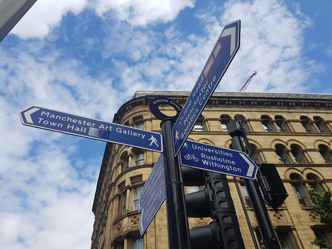The devastating Manchester Arena attack in 2017 has thankfully prompted a major re-evaluation of security at arenas and stadiums. Figen Murray, whose son Martyn Hett was one of the 22 victims of the attack in Manchester, has led the charge to see stronger measures introduced and – pre-COVID-19 – succeeded in getting government backing for ‘Martyn’s Law’. As event spaces prepare to re-open, albeit with a very different set of immediate operational concerns, we can consider which technologies may be required and how they should best be deployed to create viable spaces that people can attend and feel safe, writes Kenny Long, UK Business Development Lead – Facial Recognition at the surveillance product company Digital Barriers.
Martyn’s Law, which has been backed by the UK Government but put on hold due to the COVID-19 crisis, would require venue operators to consider the risk of a terror attack and put proportionate and reasonable measures in place to protect the public. This would not only see an increase in staff training and incident response plans and exercises, but the introduction of airport-style security measures, such as metal-detectors and bag scanners.
However, unlike airports, which see a steady flow of people throughout the day, stadiums and arenas must handle the movement of large volumes of people in and out within very short time windows. Airport-style checkpoints may present a new target for potential attackers as they are likely to result in large queues outside the venue, before any form of security check has taken place, ultimately leaving people unprotected and vulnerable.
Even the highly regulated world of airport security recognises the need to speed up passenger flow and eliminate pinch points. For example, facial recognition is now regularly seen at passport gates. Fortunately, similar measures can be put in place to safeguard concert-goers and sports fans.
For example, facial recognition engines specifically designed for the purpose can be used to scan crowds for a person of interest, someone who is known by police and whose biometric information is included on a secure watch list. Facial recognition tools can assist security personnel by surveying large numbers of people at once without taking a break or getting tired, alerting the security officer when a face is spotted that may be worth drawing their attention to. It reduces the load by enabling them to look specifically for red flags or signs of suspicious activity, without also having to keep on top of a mental rolodex of people banned from the venue. It complements physical security measures by monitoring people before they even enter the venue, including while they are queuing outside.
The crux of this innovative technology is that it can give security staff real-time situational awareness. Those tools capable of live-streaming, either from CCTV cameras fixed around the site or from body cameras worn by personnel, enable security teams to react quickly in response to a situation or identification in real-time. As well as being a hugely valuable to first-responders on the ground, who may be able to intercept a suspect before they have the chance to act, this is invaluable to those in the control centre. With the addition of live video streaming in from multiple sources, control centre staff can thoroughly assess the situation and take the most appropriate course of action, as well as inform the emergency services of exactly what has happened, rather than relaying second-hand information.
Of course, even though live facial recognition may do much of the legwork in terms of identifying a person of interest, security staff must be prepared to act as soon as a match is made. It is important to note that a trained staff member will always make the final call. In practice, this could mean simply asking for proof of identity from the person, which could lead to no further action being taken and their biometric information removed from the system, or could put a stop to a potentially devastating criminal plot.
Deploying facial recognition
Despite its clear benefits, many people still have concerns surrounding the use of facial recognition tools. However, as long as this technology is deployed correctly there is no need for concern. It is important to ensure that the PLANT mentality is considered before any video surveillance tool is deployed, which will ensure its use is proportionate, legal, accountable, necessary and transparent, as well as highlighting to the public that an officer will always make the final call before taking any action when utilising this tech.
There are also steps that can be taken to ensure the system runs as effectively as possible. This includes inputting the highest quality images possible into the watch list, to not only increase the chances of identifying the person but also reduce the likelihood of false positives, and adjusting the parameters according to the situation.
Martyn’s Law is yet to be passed but some, such as Manchester City Council, (pictured; Manchester city centre) are choosing to adopt its suggestions early. With concert venues and stadiums sitting empty due to the global pandemic, there is no better time for the operators of these locations to reassess their security processes and prepare for the responsible deployment of new measures. By implementing surveillance tools, such as facial recognition, in collaboration with airport-style security measures, staff will have the real-time situational awareness necessary to maximise the protection of the public from potential threats.









